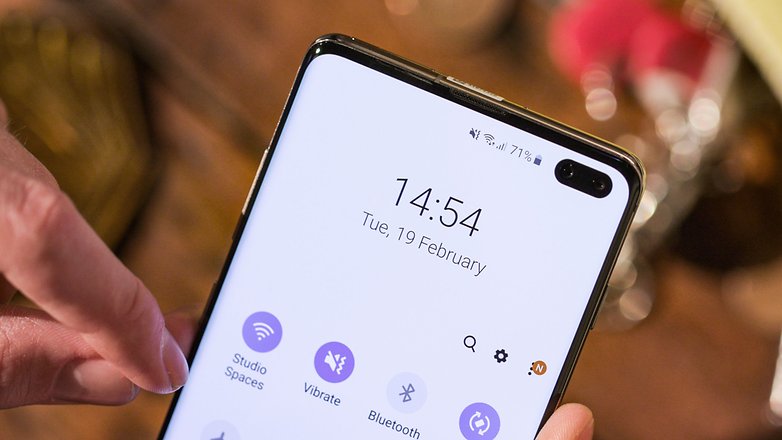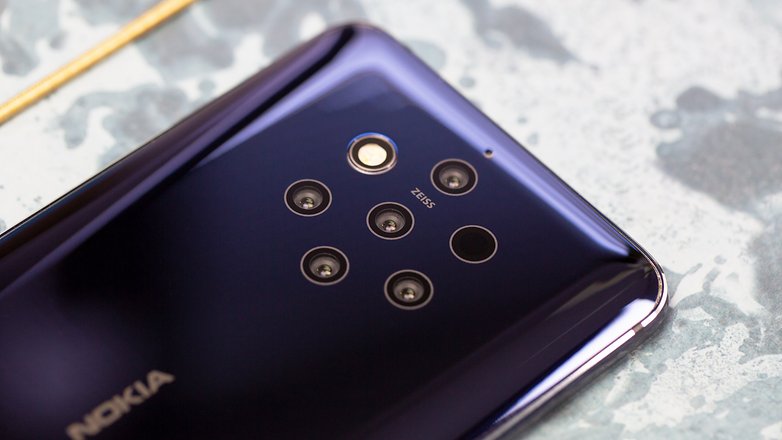The 3 biggest smartphone trends of 2019
A year is a long time in the smartphone industry. Even during what is typically regarded as a static spell for innovation, there were several trends that developed and spread in 2019. Here are the three biggest smartphone fashions of the year just gone.
Innovations and new ideas tend to start when a flagship phone from a flagship manufacturer tries something different. We all know by now that Apple did not invent the notch with the iPhone X, but it’s still the reason why the notch became a thing, and why every manufacturer adopted it. This year, trends seemed to trickle down to the mid-range and entry-level devices pretty quickly too.
1. In-display fingerprint sensors
We first saw in-display fingerprint technology in 2018, of course, but back then it was only available on a couple of devices like the OnePlus 6T and the Huawei Mate 20 Pro. This year, however, in-display fingerprint sensors are everywhere!
In 2019, every flagship worth its salt was launched with this technology, as were plenty of smartphones that cost a lot less too. When you consider that the Samsung Galaxy Note 9 still had an old-school fingerprint sensor on the back, and then a little over a year later something like the Realme X2 – a €299 phone – has an in-display fingerprint sensor, that’s really quite remarkable.
We’ve seen several approaches to the in-display fingerprint sensor, including optical and ultrasonic technologies, and it hasn’t always been plain sailing for the manufacturers. We’ve experienced the highs of the trend with phones like the OnePlus 7T Pro and the Galaxy Note 10, but let’s not forget those times where it didn’t all go to plan. The Nokia 9 PureView springs to mind as an infuriating in-display fingerprint sensor, but it has at least since been fixed with an update. With both Apple and Google ditching fingerprints all together, and new facial recognition methods becoming popular, the in-display fingerprint sensor could turn out to be a short-lived trend.
2. Punched or popped-up notch solutions
There’s no doubting the notch made a big stink in the smartphone industry. Some loved it, some hated it. Other, which I suspect is the majority, didn’t really care either way. But the notch was an important saga for the industry to go through because 2019 was all about finding alternative solutions.

Samsung, which had been resistant to the classic notch design, started to get creative with alternatives. The South Korean company came up with some fancy names for its solutions too, such as the Infinity-O and the Infinity-U displays. With the Galaxy S10 series this year, we saw the Infinity-O display for the first time. These hole-punched displays had been seen before on the Honor View 20 and the Honor Nova 4 in 2018, but it was the super-popular Galaxy S-series that perhaps kickstarted the trend that many others followed.
We also saw the rise of the pop-up selfie camera this year. The Vivo NEX had floated the concept as early as the summer of 2018, but it was really in 2019 when we saw this trend spreading throughout the market. OnePlus did it with its OP7 Pro, and we’ve seen pop-up cameras come in all shapes and sizes this year. I’m still a fan of Oppo’s sharkfin pop-up, and who can forget the display slide of the Xiaomi Mi Mix 3!
3. Camera escalations
When you look back at the last quarter of 2018, all the biggest flagship phones had dual cameras – like the Galaxy Note 9 and the iPhone XS, for example, had two sensors on the back. Google was still in the era of the single shooter with the Pixel 3 and Pixel 3XL.
Fast forward 12 months and the thought of only a dual rear camera on a modern smartphone is almost laughable. Google still just has the two on its Pixel 4 phones, of course, but the rest of the market has snowballed into an arms race for more lenses, more megapixels, and more camera tricks.

A triple camera has become the standard rear camera setup, with some dipping their toes into quad-cameras. Then there’s our old friend the Nokia 9 PureView, with its five cameras on the back. But it’s not just the number of sensors that is growing, but the megapixel race is in full flow too. At the start of the year we saw the Sony IMX586 coming to smartphones like the Honor View 20 and the Xiaomi Mi 9, and that sensor is now pretty common among mid-range phones too. We now have the Samsung Isocell HMX Bright, a 108-megapixel sensor, in the Xiaomi Mi Note 10. That escalated pretty quickly…
Where will this trend go next? We’ve seen Macro and Penta cameras coming to the market already. Is that the future? Only time will tell. If you want to read about what to expect from smartphone cameras in 2020, though, you can do so in this article.
What were your favorite smartphone trends from 2019? Were there any innovations that you really didn’t like? Share your thoughts in the comments section below.


